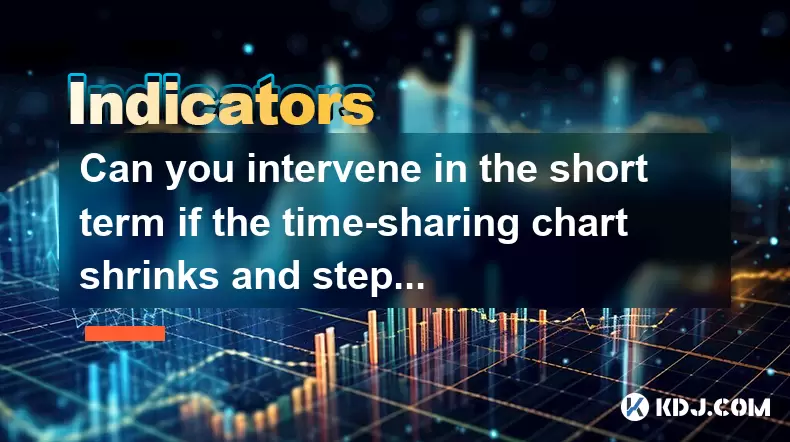-
 Bitcoin
Bitcoin $108,338.0981
-0.13% -
 Ethereum
Ethereum $2,566.4077
1.16% -
 Tether USDt
Tether USDt $1.0001
-0.01% -
 XRP
XRP $2.2841
-2.59% -
 BNB
BNB $658.5241
-0.17% -
 Solana
Solana $150.3819
-1.08% -
 USDC
USDC $0.9999
-0.01% -
 TRON
TRON $0.2864
-0.24% -
 Dogecoin
Dogecoin $0.1694
0.24% -
 Cardano
Cardano $0.5813
-0.72% -
 Hyperliquid
Hyperliquid $37.8292
-4.60% -
 Bitcoin Cash
Bitcoin Cash $503.3593
1.69% -
 Sui
Sui $2.8784
-0.69% -
 Chainlink
Chainlink $13.4784
-0.43% -
 UNUS SED LEO
UNUS SED LEO $9.0793
-0.27% -
 Stellar
Stellar $0.2537
-0.41% -
 Avalanche
Avalanche $18.0047
-0.23% -
 Shiba Inu
Shiba Inu $0.0...01181
1.56% -
 Hedera
Hedera $0.1608
0.49% -
 Toncoin
Toncoin $2.7568
-0.93% -
 Litecoin
Litecoin $86.4121
-0.20% -
 Monero
Monero $313.7273
-0.86% -
 Polkadot
Polkadot $3.3715
-0.66% -
 Dai
Dai $1.0001
0.01% -
 Ethena USDe
Ethena USDe $1.0004
0.03% -
 Bitget Token
Bitget Token $4.2902
-0.54% -
 Uniswap
Uniswap $7.5361
2.73% -
 Aave
Aave $285.6090
-0.55% -
 Pepe
Pepe $0.0...09958
0.28% -
 Pi
Pi $0.4560
-0.65%
Can you intervene in the short term if the time-sharing chart shrinks and steps on the moving average without breaking it?
2025/06/30 00:49

Understanding the Time-Sharing Chart in Cryptocurrency Trading
In cryptocurrency trading, time-sharing charts, often referred to as tick charts or time-based candlestick charts with very short intervals (e.g., 1-minute or 5-minute), play a crucial role in analyzing price behavior over small time frames. These charts are especially important for day traders and scalpers who rely on quick decisions based on immediate price action. When the chart appears to "shrink," it typically indicates a period of low volatility or consolidation.
The phrase "steps on the moving average without breaking it" refers to a situation where the price touches or briefly tests a key moving average line — such as the 20-period or 50-period MA — but does not close below or above it. This can signal strength in the current trend or potential reversal points depending on context.
What Does It Mean When Price Steps on a Moving Average?
When the price steps on a moving average, it suggests that the market is testing this level as support or resistance. If the moving average acts as support and the price bounces off it without breaking through, it could indicate a continuation of an uptrend. Conversely, if the price steps on a resistance-level moving average and fails to break above it, this may signal ongoing bearish control.
For instance, in a rising market, a brief pullback to the 20-period moving average that doesn’t breach it can be seen as a healthy correction rather than a trend reversal. Traders often use this as a potential entry point to rejoin the trend.
- Ensure the moving average you're observing aligns with your trading strategy.
- Confirm whether the price has actually closed beyond the MA or just touched it intraday.
- Observe volume during the touch; higher volume near the MA can confirm stronger interest at that level.
Why Is It Important Not to Break the Moving Average?
The fact that the price does not break the moving average is significant because it preserves the integrity of the trend. A clean bounce off a moving average without a close through it shows resilience in the current direction of the market. This is particularly relevant in fast-moving crypto markets where emotional swings can cause temporary dips.
Traders often interpret this scenario as a sign that the prevailing trend remains intact. In such cases, entering a position aligned with the trend can be considered, especially when other technical indicators like RSI or MACD corroborate the strength of the move.
- Look for candlestick patterns near the MA, such as bullish engulfing or hammer candles.
- Check if momentum indicators show divergence or confirmation of trend continuation.
- Monitor order flow and depth near the moving average to assess institutional or whale activity.
How to Determine If Short-Term Intervention Is Feasible
Intervening in the short term requires a combination of technical analysis, timing, and risk management. Here’s how to assess feasibility:
- Identify the dominant trend using longer timeframes like 1-hour or 4-hour charts.
- On the time-sharing chart, wait for the price to step on the MA and show signs of rejection.
- Use volume spikes or order book data to validate buying or selling pressure.
- Place tight stop-loss orders just beyond the MA to manage risk effectively.
If all these conditions align, then intervening in the short term becomes a viable strategy. However, always ensure that you’re not fighting the broader trend or ignoring macro factors affecting the asset.
Risks Involved in Acting on This Signal
While stepping on a moving average without breaking it might seem like a solid trade setup, several risks should not be overlooked:
- False signals: The price might give the appearance of bouncing off the MA only to reverse sharply afterward.
- Whipsaws: Especially in volatile crypto markets, sudden spikes can trigger stop losses before the intended move materializes.
- Lack of confluence: Acting solely on this signal without additional confirmation from volume, momentum, or order flow increases the likelihood of failure.
To mitigate these risks:
- Always check higher timeframes to ensure alignment with the overall trend.
- Avoid trading during major news events unless you have a clear edge.
- Never risk more than 1–2% of your account on a single trade based on this signal alone.
Practical Example Using a Cryptocurrency Pair
Let’s take the example of BTC/USDT on a 5-minute chart. Suppose Bitcoin has been in an uptrend and recently pulls back to test the 20-period EMA. The price touches the EMA but closes above it, forming a bullish pin bar.
Here’s how a trader might act:
- Confirm the trend on the 1-hour chart is still bullish.
- Wait for a candle to close above the EMA after touching it.
- Enter a long position with a stop-loss just below the recent swing low.
- Set a target at the previous resistance zone or use a trailing stop.
This approach allows for a high probability trade setup based on the EMA bounce without a break.
Frequently Asked Questions
Q: Can I use any moving average for this strategy?
Yes, but shorter-period MAs like the 9, 10, or 20-period are more responsive and suitable for time-sharing charts. Longer MAs like the 50 or 200 may lag too much for intraday trading.
Q: How do I know if the price truly stepped on the MA and didn’t break it?
Use candlestick closing prices rather than wicks. If the body of the candle doesn’t close beyond the MA and only the shadow touches it, it counts as a step, not a break.
Q: Should I apply this strategy across all cryptocurrencies?
No, highly illiquid altcoins may produce misleading signals due to thin order books. Stick to major pairs like BTC, ETH, or SOL where liquidity is sufficient.
Q: What if the price breaks the MA after initially stepping on it?
That invalidates the setup. Wait for another opportunity or reassess the trend. Entering after a confirmed break increases risk significantly.
免責聲明:info@kdj.com
所提供的資訊並非交易建議。 kDJ.com對任何基於本文提供的資訊進行的投資不承擔任何責任。加密貨幣波動性較大,建議您充分研究後謹慎投資!
如果您認為本網站使用的內容侵犯了您的版權,請立即聯絡我們(info@kdj.com),我們將及時刪除。
- Coinbase(Coin)IPO閃回:集會過度擴展還是剛開始?
- 2025-07-08 22:50:12
- Toonie麻煩:像專家一樣發現假貨
- 2025-07-08 22:50:12
- Coinbase,Crypto Stocks和Ozak AI:乘坐Web3浪潮
- 2025-07-08 23:10:14
- BTC,打snter代幣和加密貨幣場景:有什麼交易?
- 2025-07-08 23:15:12
- 模因硬幣,早期投資,拋物線增長:捕捉波浪
- 2025-07-08 22:30:12
- 加密,機構,BTC&ETH:新時代黎明
- 2025-07-08 22:30:12
相關知識

How to trade Dogecoin based on funding rates and open interest
2025-07-07 02:49:34
<h3>Understanding Funding Rates in Dogecoin Trading</h3><p>Funding rates are periodic payments made to either long or short traders ...

What is the 'God Mode' indicator for Dogecoin
2025-07-07 16:42:48
<h3>Understanding the 'God Mode' Indicator</h3><p>The 'God Mode' indicator is a term that has emerged within cryptocurrency trading ...

Using Gann Fans on the Dogecoin price chart
2025-07-07 21:43:10
<h3>Understanding Gann Fans and Their Relevance in Cryptocurrency Trading</h3><p>Gann Fans are a technical analysis tool developed b...

How to spot manipulation on the Dogecoin chart
2025-07-06 12:35:49
<h3>Understanding the Basics of Chart Manipulation</h3><p>Chart manipulation in the cryptocurrency space, particularly with Dogecoin...

Dogecoin market structure break explained
2025-07-07 02:51:32
<h3>Understanding the Dogecoin Market Structure</h3><p>Dogecoin, initially created as a meme-based cryptocurrency, has evolved into ...

How to backtest a Dogecoin moving average strategy
2025-07-08 04:50:05
<h3>What is a Moving Average Strategy in Cryptocurrency Trading?</h3><p>A moving average strategy is one of the most commonly used t...

How to trade Dogecoin based on funding rates and open interest
2025-07-07 02:49:34
<h3>Understanding Funding Rates in Dogecoin Trading</h3><p>Funding rates are periodic payments made to either long or short traders ...

What is the 'God Mode' indicator for Dogecoin
2025-07-07 16:42:48
<h3>Understanding the 'God Mode' Indicator</h3><p>The 'God Mode' indicator is a term that has emerged within cryptocurrency trading ...

Using Gann Fans on the Dogecoin price chart
2025-07-07 21:43:10
<h3>Understanding Gann Fans and Their Relevance in Cryptocurrency Trading</h3><p>Gann Fans are a technical analysis tool developed b...

How to spot manipulation on the Dogecoin chart
2025-07-06 12:35:49
<h3>Understanding the Basics of Chart Manipulation</h3><p>Chart manipulation in the cryptocurrency space, particularly with Dogecoin...

Dogecoin market structure break explained
2025-07-07 02:51:32
<h3>Understanding the Dogecoin Market Structure</h3><p>Dogecoin, initially created as a meme-based cryptocurrency, has evolved into ...

How to backtest a Dogecoin moving average strategy
2025-07-08 04:50:05
<h3>What is a Moving Average Strategy in Cryptocurrency Trading?</h3><p>A moving average strategy is one of the most commonly used t...
看所有文章

























































































